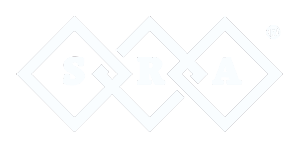Leveraging innovative technology has become more of a requirement for healthcare organizations to remain competitive with patient expectations. As healthcare IT continues to rapidly advance, identifying a solution that adds value and drives profit can be a daunting task, not to mention the hassle of transitioning internal processes.
As we head into the new year, let’s take a look at a few trends that we expect to shape the way we approach, and manage patient care.
Google Glass Technology for Medical Documentation
Medical documentation can be time-consuming, costly, and exhausting. Many would argue that documenting patient data during the consultation creates a barrier in the patient and doctor interaction. When medical professionals are consumed with documenting ailments and reviewing medical history, the chances of them developing genuine relationships with their patients is slim to none.
While the most common solution is the use of a scribe, the latest innovation in medical documentation integrates the use of Google Glass. Companies such as Augmedix are leveraging Google Glass technology to enable doctors to maximize patient interaction, while accurately collecting and storing data. Using Google Glass, doctors can stream entire exams to a remote transcription center for later reference, allowing them to give patients their full attention during consultations.
Telehealth
Telehealth (or sometimes referred to as telemedicine) isn’t new, but it’s certainly becoming more and more integrated into healthcare organizations. When considering telehealth solutions, there are four primary applications where organizations have seen success in digitizing: Live Video, Store-and-forward, Remote Patient Monitoring, and Mobile Health.
Through these applications doctors can more efficiently monitor patients who would otherwise need multiple appointments per week, and patients can receive the care they need right from their home. Additionally, robust off-the-shelf applications enable care providers to offer secure communication of lab or test results to the patient, along with resources to answer questions or get more information on their results.
Big Data
A topic that seems to stretch every industry, Big Data is a great buzzword, but what does it mean for patient outcomes? If digested and implemented correctly, a lot. As healthcare services continue to become more digitized, organizations are collecting copious amounts of data not only about their patients, but also their equipment and facilities.
That said, digesting all the data you collect and trying to put it to use simultaneously might not be the best approach. Start first by identifying specific goals like improving patient sentiment or lowering overhead costs, and define what type of data you’ll need to measure. From there, you can work with a third party, or internal IT team to ensure your setup to collect the data, and finally analyze it for improvement opportunities.
Implementing Technology
With so much potential at our fingertips, it’s important to remember that simply implementing the technology doesn’t guarantee success. It’s imperative to ensure that your organization is prepared, and enabled to succeed from root to tip. Just like you’d have a professional help with the technical implementation of new processes, you’ll need some professional guidance to transition your leadership and foster system-wide acceptance.
From operational development to interim leadership, COORS can ensure that your team is as connected as your hardware. To learn more about how COORS can assist you with process transition, contact one of our development professionals.


